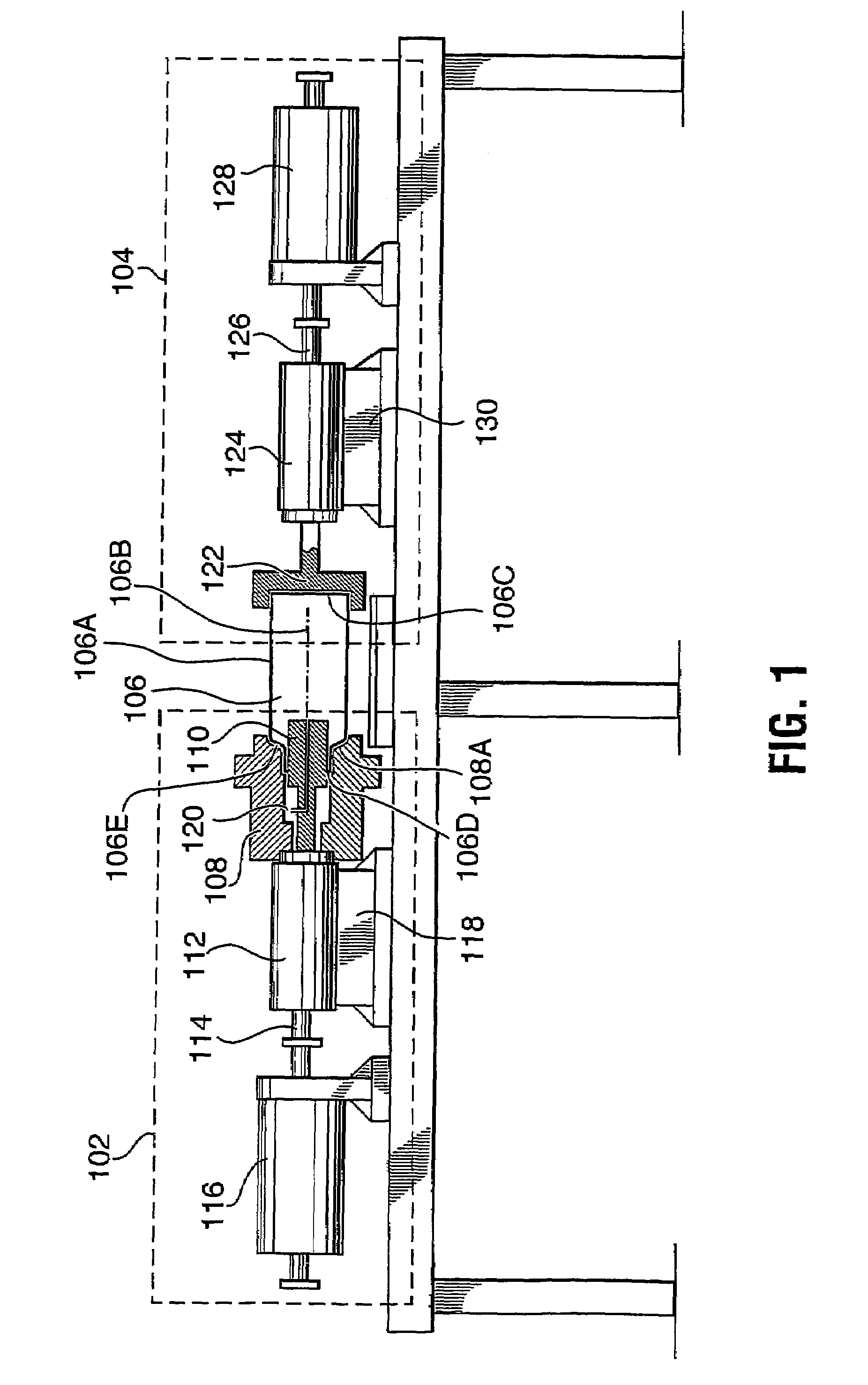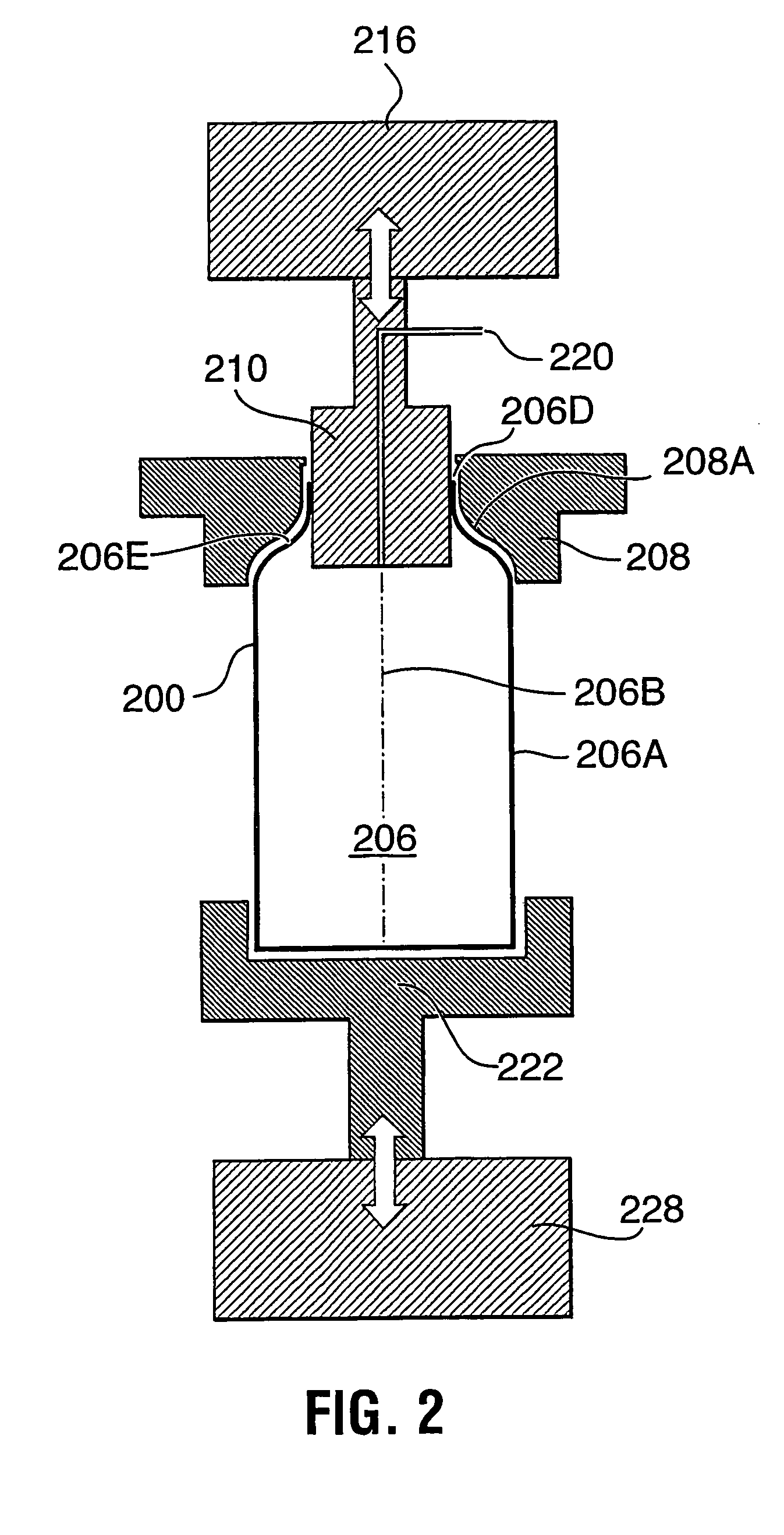Linear drive metal forming machine
a metal forming machine and linear drive technology, applied in the field of container die necking, can solve the problems of difficult to develop the fine tuning properties required to manufacture containers with significant neck lengths, long necking profiles, and complicated trial and error processes, and achieve high degree of versatility in forming operations, high degree of adjustable, and rapid modification of metal forming.
- Summary
- Abstract
- Description
- Claims
- Application Information
AI Technical Summary
Benefits of technology
Problems solved by technology
Method used
Image
Examples
Embodiment Construction
[0026]FIG. 1 of the drawings discloses a schematic illustration of one embodiment of the overall system and apparatus of the present invention. As shown in FIG. 1, the apparatus can be viewed as including a forming segment 102 and a drive segment 104 (illustrated within dotted lines) that together carry out operations on a seamless unitary metal container body 106 to achieve a reduction in the diameter of the sidewall 106A of the body, an operation also known as die necking. Die necking is initiated by the stroke of a first linear motor 116, which is preferably a linear drive motor, acting as a prime mover. The first linear motor 116 generates an inwardly directed longitudinal force on a knockout ram 114 that is transmitted to a knockout element 110 (often referred to simply as a “knockout”). The knockout ram 114 is secured by a knockout ram bushing / die retainer 112 which allows the knockout ram to experience linear motion in the direction of the longitudinal axis 106B of the metal ...
PUM
| Property | Measurement | Unit |
|---|---|---|
| diameter | aaaaa | aaaaa |
| force | aaaaa | aaaaa |
| pressure | aaaaa | aaaaa |
Abstract
Description
Claims
Application Information
 Login to View More
Login to View More - R&D
- Intellectual Property
- Life Sciences
- Materials
- Tech Scout
- Unparalleled Data Quality
- Higher Quality Content
- 60% Fewer Hallucinations
Browse by: Latest US Patents, China's latest patents, Technical Efficacy Thesaurus, Application Domain, Technology Topic, Popular Technical Reports.
© 2025 PatSnap. All rights reserved.Legal|Privacy policy|Modern Slavery Act Transparency Statement|Sitemap|About US| Contact US: help@patsnap.com



